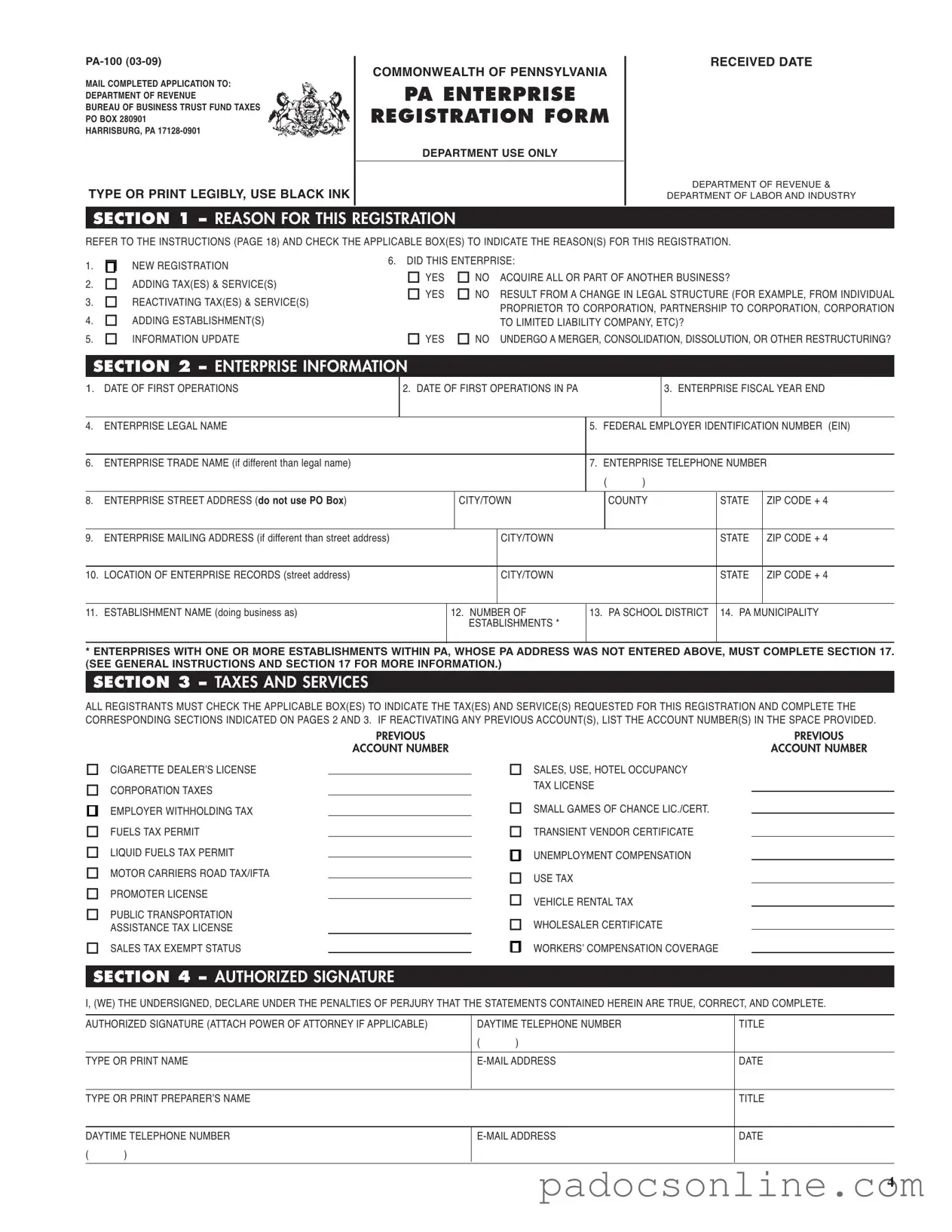Filling out the Pennsylvania PA-100 form can be complex, and errors can lead to delays or complications in the registration process. One common mistake is not using black ink or failing to type or print legibly. The instructions clearly state that the form must be filled out in black ink and that all entries should be easy to read. Illegible handwriting can result in misunderstandings and additional follow-up with the Department of Revenue.
Another frequent error is not indicating the correct reason for registration in Section 1. Applicants often forget to check the appropriate box to specify whether they are registering a new business, updating information, or making other changes. This oversight can lead to processing delays as the department may need to clarify the applicant's intentions.
Many individuals also neglect to provide accurate enterprise information in Section 2. This includes the legal name, address, and contact details. If any of this information is incorrect or incomplete, it can hinder communication with the Department of Revenue and create further complications.
Additionally, failing to complete Section 3 regarding taxes and services requested is a common pitfall. Applicants must check the appropriate boxes to indicate which tax services they require. Omitting this information can result in the form being returned for correction, which prolongs the registration process.
Another mistake often made is not providing the correct ownership and partnership details in Section 6. This section requires specific information about owners, partners, and shareholders. Incomplete or inaccurate entries can lead to issues with tax obligations and compliance.
Some applicants overlook the need to complete Section 7, which pertains to business activity information. This section requires a breakdown of the percentage of total receipts or revenues attributed to different business activities. Failing to provide this data can result in incorrect tax classifications.
Finally, many individuals do not double-check their entire application before submission. Simple errors, such as typos or missing signatures, can cause significant delays. Taking the time to review the completed form can prevent unnecessary complications and ensure a smoother registration process.
